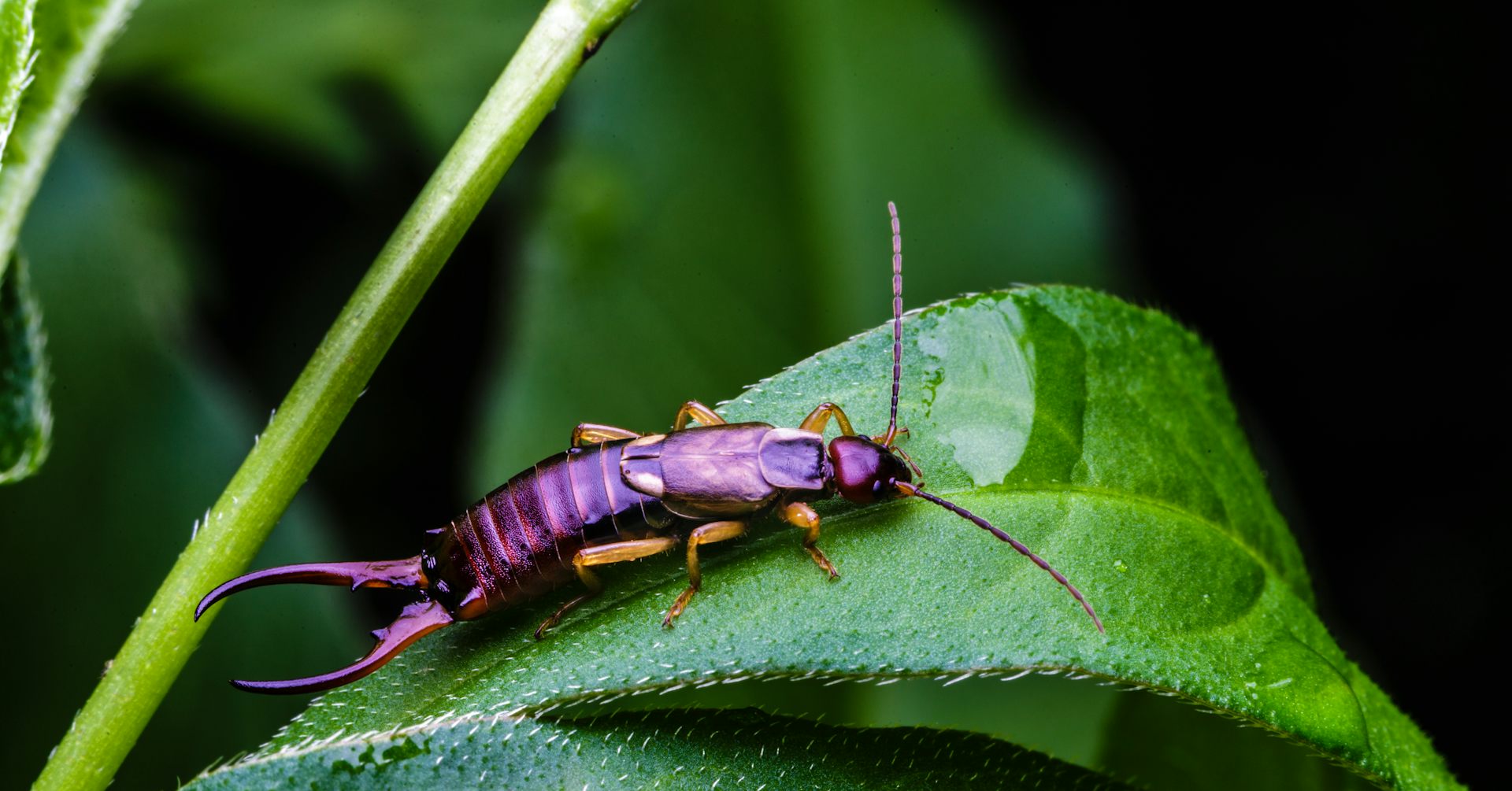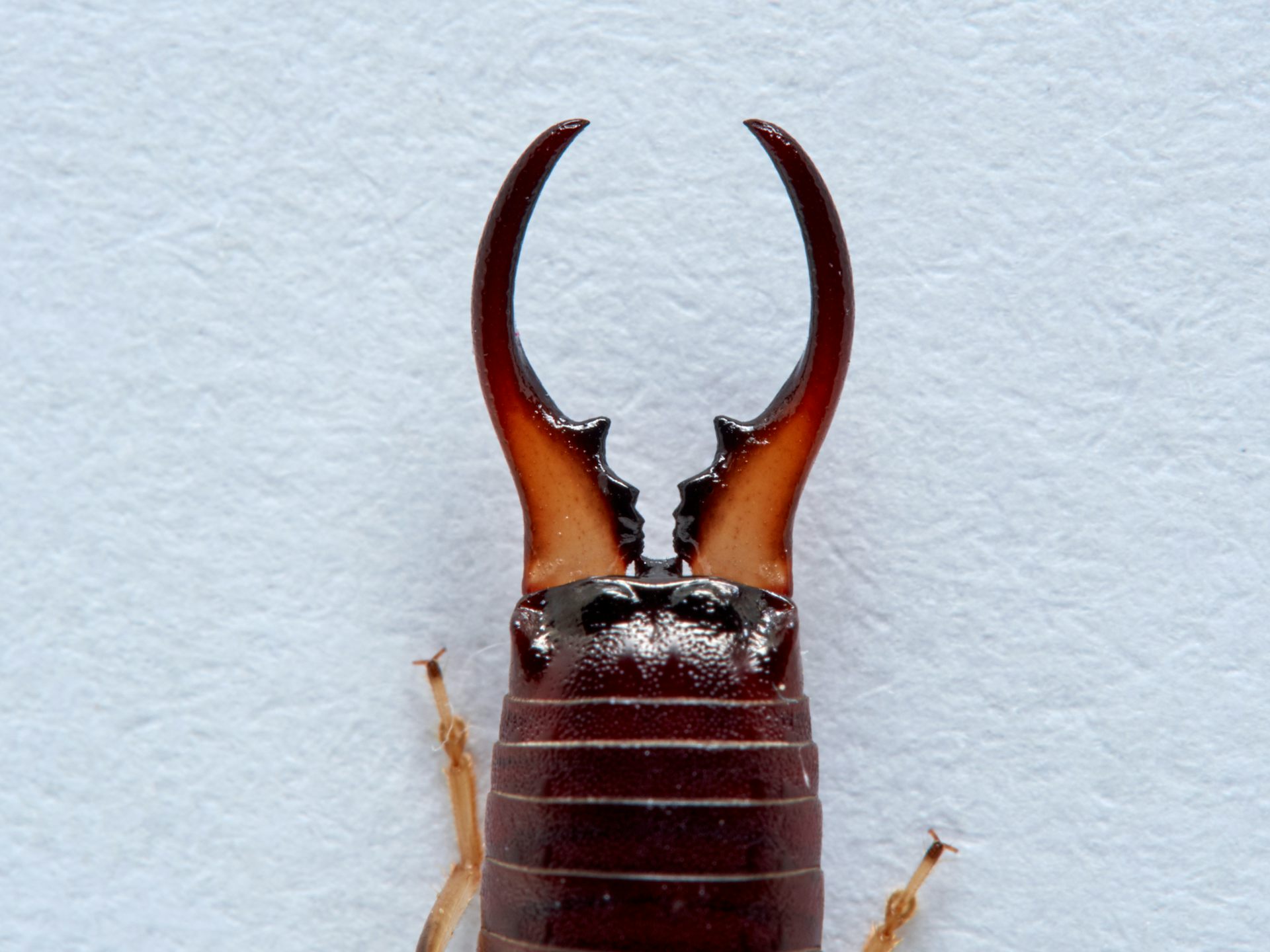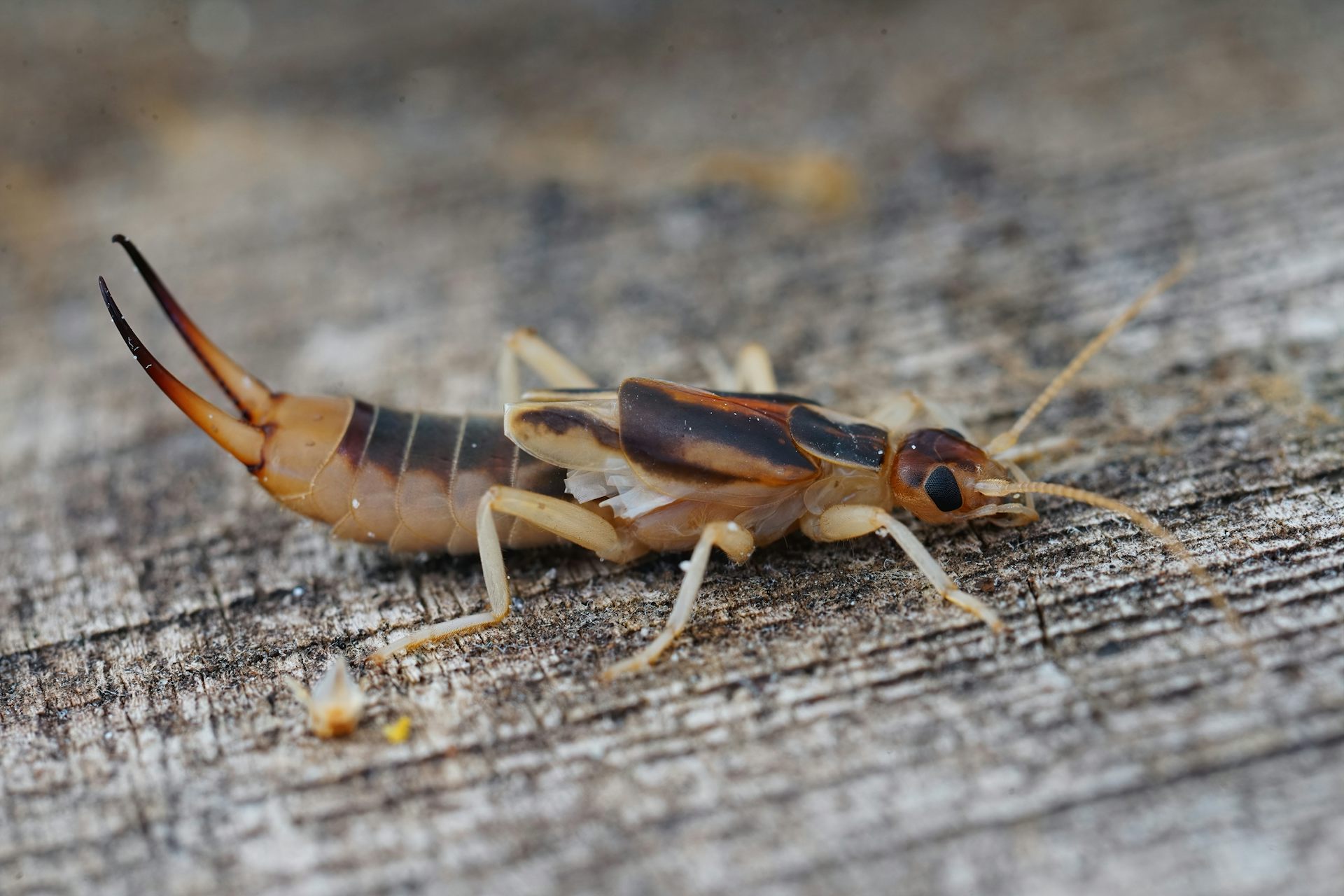The Humble Earwig
Not a Pest But A Kind and Caring Insect
Not a Pest But A Kind and Caring Insect
Forficula auricularia
Credit: Pudding4brains/Wikipedia
Earwigs are the hero single mothers of the insect world – and good for your garden too
Of the more than 1000 species worldwide, only four are native to the UK, with a further three introduced species.
Earwigs are often regarded as garden pests because they can and sometimes do, damage growing plants and soft fruits such as strawberries, but what is not generally recognised is that they are predators on much more destructive pests such as aphids.
But there are a few things about these fascinating insects that mean they should command our respect and protection by leaving them undisturbed.
- Although they are not noted for flying (I have only ever seen one in flight) they have delicate hind wings tightly folded underneath small, leathery forewings known as tegmina. Earwigs are members of the order Dermaptera which refers to their skin-like hind wings. The folding has been studied as a unique way to fold a large area into a small space, providing an engineering solution to the deployment of solar panels on satellites or packing parachutes, for example
- Females devote a considerable amount of time caring for their eggs, then the baby 'wiglets'. Because they lay their eggs in damp soil, they need constant cleaning to prevent the growth of moulds. The female is one of the few insects known to brood her eggs and care for her young.
- Males come in two forms which differ in the shape and length of their pincers: brachylabic, with short, strongly curved pincers and macrolabic with longer, straighter pincers. Macrolabic males tend to be more successful at mating and will often displace brachylabic males in the act of mating. However, there appears to be an evolutionary trade-off, since macrolabic males are more susceptible to infections, producing fewer haemocyte cells in response to infection compared to brachylabic males. It is probable that these two traits are closely linked so the beneficial trait of more successful mating is in dynamic balance with the deleterious trait of a reduced ability to fight infections. An example of how an evolutionary balance can be achieved by genetic linkage, and affected by the environment - in this case the prevalence of pathogens.
Incidentally, that last fact about the trade-off between greater breeding success and greater susceptibility to infections is something that any decent intelligent [sic] design notion should be capable of explaining because it looks suspiciously like the chance occurance a mindless, unplanned and uncaring natural process such as evolution by natural selection would produce. Any Creationists prepared to have a go, or will this be ignored like so many other biological facts that refute the ID notions?
The pincers are just about harmless to a human, by the way, being unable to penetrate our skin and inflict more than the slightest pinch, nor do the insects enter our ears unless we sleep rough in woods or ditches, in which case, we might be providing them with a tempting warm, moist shelter.
In the following article, reprinted from The Conversation under a Creative Commons license, Christopher Terrell Nield, Principal lecturer, bioscience, Nottingham Trent University, explains why earwigs are generally misunderstood and deserve our respect. The original article has been reformatted for stylistic consistence:

Earwigs are the hero single mothers of the insect world – and good for your garden too
Christopher Terrell Nield, Nottingham Trent University
You lift a stone and staring up at you is a little insect with its tail curled and pincers ready to inflict who knows what. Then you see its attendants – tiny white insects, huddled underneath. Should you drop the stone and quash them, or leave them be?
What you have discovered is a family of one of Britain’s least loved, but one of the most caring insects – an earwig.
Only about 1% of insect species show parental care. Earwigs are one of them.
Females construct an underground chamber and lay 30 to 60 eggs which they protect and keep clean from fungi by “licking”. If a mole or another burrowing animal scatters her eggs, she diligently collects them together again.
They hatch after about 70 days, normally late winter. Searching for food in winter when predators are hungrier than usual is risky, but it helps the mother ensure her babies survive to adulthood because it means they can stay safely in their chamber until they are larger.
By the end of spring the baby “wiglets” have dispersed. The female may then have a second, smaller brood with eggs fertilised from the original mating.

Mother earwigs take parenting seriously.
In contrast, there is a type of wasp which will seal her eggs in a nest with only enough food for a few larvae, leaving the strongest to eat their siblings. This is parental provisioning, rather than parental care.
Clever wings
Earwigs are unusual in other ways. They are members of the order Dermaptera (“skin wings”), a reference to their shortened, leathery front wings, also called tegmina. These protect the membrane-covered hind wings. Grasshoppers, stick insects and cockroaches have skin wings too.
Earwigs react to touch, known as showing positive thigmotaxis, so they habitually crawl into confined spaces. As an adaptation to this behaviour, their hind wings are folded under the tegmina. It is possible the name “earwig” comes from their ear-shaped hind wing, which is so intricately folded it has been studied for engineering solutions from self folding tents to space flight.

This earwig looks like he could be lounging on a deck chair.
But they will not bore into your brain, whatever stories your older siblings or classmates traumatised you with. Earwigs may enter human ears because they prefer close contact, not because they want to do you any harm.
When you consider the fact human activity has wiped out so many insects that nature is threatened with collapse, the idea of these insects as dangerous is laughable.

There are almost 2,000 species of earwig.
The most distinctive feature of European earwigs are their terminal forceps. Forceps are used for defence, to incapacitate prey, and in mating rituals. The forceps are straight in females and curved in males.
They differ between males too. Those with shorter, strongly curved forceps are called brachylabic. Males with long, straighter forceps are called macrolabic. Macrolabic males are more successful in mating and interrupt ongoing copulation involving less well-endowed earwigs.
One study examined the relationship between weapon size and the efficiency of earwigs’ immune system. It found forceps size s off with haemocyte concentrations. In insects, haemocyte cells are crucial in the prevention of infection. Brachylabic males produced more haemocytes when infected with bacteria than macrolabic earwigs.
Just like us, earwigs can be a social bunch. In autumn, they release a pheromone that attracts other earwigs. This is primarily for mating, but earwigs aggregate in hibernation, a bit like ladybirds. Nymphs ? also produce pheromones to encourage maternal care.
Courtship involves the forceps. Males wave them in the air and use them to stroke and grasp the female, but they aren’t used in mating. The pair couples tail to tail for sperm transfer, which can take several hours.
Males and females can have multiple mates. They may stay together after the female has made a burrow and laid her eggs, but males usually return to the surface to forage, so don’t feed their wiglets.
Are earwigs good or bad?
They carry no known human pathogens but can use their forceps to deliver a slight nip. They are sometimes garden or horticultural pests. They damage plants, particularly dahlias, lettuce, strawberries, potatoes, and roses.
But earwigs benefit us too. As consumers of organic matter they speed up decay in compost. They are nature’s pest controllers, and on plants will eat aphids, mites, and insect larvae. If you’d prefer to keep your distance, they can be trapped using a damp, rolled up newspaper, or controlled by nonchemical methods, including diatomaceous earth (a natural rock that can be crumbled to a fine white powder).
Earwigs do enter houses through cracks and crevices and may collect in damp cellars, pantries, or bathrooms using their aggregation pheromone. But they do no harm to your house and won’t breed indoors.
They demonstrate the importance of maternal care and biological trade-off. They may help us better to design structures that can fit into small spaces but unfold into something much larger.
Perhaps people’s dislike for earwigs is similar to the reaction ants get, when you lift a stone and find a seething colony. Some researchers believe their sheer numbers threaten human desires to be individual and independent.
Here you are interrupting a mostly peaceful family life, with mother and wiglets startled by a sudden stab of light. Carefully replace the stone. They want to be left alone just as much as you do.
Christopher Terrell Nield, Principal lecturer, bioscience, Nottingham Trent University





No comments :
Post a Comment
Obscene, threatening or obnoxious messages, preaching, abuse and spam will be removed, as will anything by known Internet trolls and stalkers, by known sock-puppet accounts and anything not connected with the post,
A claim made without evidence can be dismissed without evidence. Remember: your opinion is not an established fact unless corroborated.